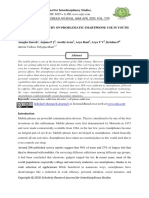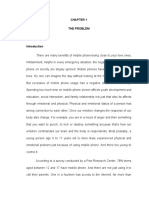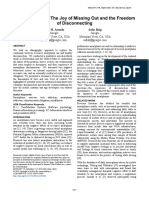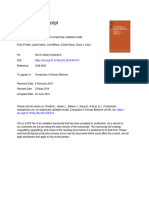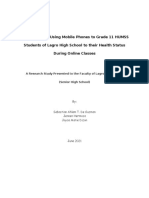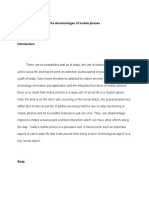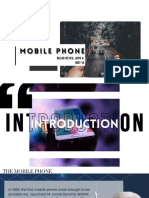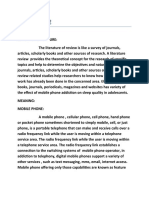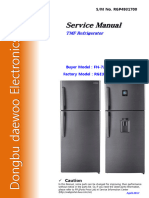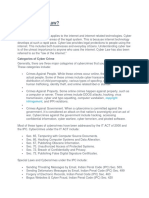0% found this document useful (0 votes)
150 views8 pagesSmartphone Usage
1) Mobile phone usage has increased dramatically worldwide in recent decades and now over 7 billion people own mobile phones. However, excessive mobile phone use can negatively impact both physical and mental health.
2) College students in particular have high rates of smartphone addiction, estimated between 24.8-27.8%, and this rate is increasing each year. Symptoms of smartphone addiction include constantly checking the phone and feeling anxious without it.
3) Prolonged exposure to mobile phone radiation may increase health risks like cancer, neurological diseases, and male infertility over the long term. Children are especially vulnerable due to thinner skull bones.
Uploaded by
Azam RehmanCopyright
© © All Rights Reserved
We take content rights seriously. If you suspect this is your content, claim it here.
Available Formats
Download as DOCX, PDF, TXT or read online on Scribd
0% found this document useful (0 votes)
150 views8 pagesSmartphone Usage
1) Mobile phone usage has increased dramatically worldwide in recent decades and now over 7 billion people own mobile phones. However, excessive mobile phone use can negatively impact both physical and mental health.
2) College students in particular have high rates of smartphone addiction, estimated between 24.8-27.8%, and this rate is increasing each year. Symptoms of smartphone addiction include constantly checking the phone and feeling anxious without it.
3) Prolonged exposure to mobile phone radiation may increase health risks like cancer, neurological diseases, and male infertility over the long term. Children are especially vulnerable due to thinner skull bones.
Uploaded by
Azam RehmanCopyright
© © All Rights Reserved
We take content rights seriously. If you suspect this is your content, claim it here.
Available Formats
Download as DOCX, PDF, TXT or read online on Scribd
/ 8










